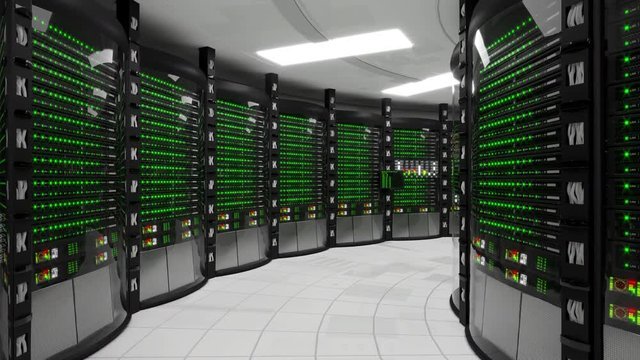
GeForce GTX 1080 vs RTX 2050: Detailed Features
December 18, 2024
How Hardware Upgrades Are Fueling the AR Glasses Market
December 20, 2024How Green Servers Are Reducing Data Center Carbon Footprints
In a world increasingly focused on sustainability, every industry is exploring ways to reduce its environmental impact. One of the biggest contributors to carbon emissions in the tech sector is the operation of data centers, which house the servers that power everything from websites and apps to cloud computing and big data analysis. These data centers consume enormous amounts of energy, and their carbon footprint can be significant, especially when powered by fossil fuels. However, a growing movement towards green servers—powered by renewable energy sources and designed with energy efficiency in mind—is helping to change the narrative.
Green servers represent a technological shift that promises to make data centers more eco-friendly while still meeting the high demands of modern digital infrastructure. Let’s explore how green servers are reducing the carbon footprints of data centers and why this shift is crucial for the tech industry’s long-term sustainability.
The Environmental Impact of Traditional Data Centers
Traditional data centers operate around the clock, running countless servers that process and store enormous amounts of data. The scale of these operations means that they require a staggering amount of energy, contributing to high electricity consumption and, by extension, high carbon emissions. According to a 2020 report by the International Energy Agency (IEA), the global energy demand from data centers was responsible for roughly 1% of the world’s total electricity use, a figure that is only expected to rise as the volume of data increases.
For many data centers, the energy powering these operations still comes from non-renewable sources like coal or natural gas. As a result, the environmental impact of traditional data centers is a major concern, both in terms of carbon emissions and resource consumption.

What Are Green Servers?
Green servers are designed to minimize their environmental impact in several ways. They operate using energy-efficient hardware, integrate renewable energy sources, and utilize advanced cooling systems to reduce their overall power usage. These servers focus on lowering the amount of electricity required to run the hardware while also ensuring that data storage and processing capabilities are not compromised.
The key characteristics of green servers include:
- Energy-Efficient Hardware: Green servers are built with components that consume less energy, such as low-power processors, memory, and storage devices. This helps to minimize the overall energy demand of the server.
- Use of Renewable Energy: Many data centers powered by green servers tap into renewable energy sources like solar, wind, or hydroelectric power. By shifting away from fossil fuels, these data centers can dramatically reduce their carbon emissions.
- Advanced Cooling Systems: Cooling systems are a major source of energy consumption in data centers. Green servers often use energy-efficient cooling methods, such as liquid cooling, or rely on natural cooling solutions like outside air cooling (also known as free cooling) to minimize the energy required for temperature regulation.
- Sustainable Materials: Green servers are often made from materials that are easier to recycle or have a lower environmental impact during production. This reduces the waste generated during manufacturing and at the end of the product’s life cycle.
How Green Servers Reduce Carbon Footprints
- Lower Energy Consumption
The most obvious way that green servers reduce the carbon footprint of data centers is by consuming less energy. Energy-efficient hardware reduces the overall power demand, allowing data centers to run more efficiently without compromising performance. This shift not only leads to lower operational costs but also ensures that fewer resources are consumed.
By improving energy efficiency across various components, green servers are able to significantly reduce their environmental impact. For example, solid-state drives (SSDs) are much more energy-efficient than traditional hard disk drives (HDDs), and energy-efficient CPUs and GPUs reduce the amount of power needed to process data.
- Renewable Energy Integration
The integration of renewable energy sources into data centers is one of the most impactful ways green servers help reduce their carbon footprint. Data centers that run on solar, wind, or hydroelectric power dramatically lower their greenhouse gas emissions compared to those that rely on fossil fuels.
Major tech companies like Google, Amazon, and Microsoft have already committed to running their data centers on 100% renewable energy. By sourcing clean power for their green servers, they’re making substantial strides in reducing the global carbon footprint of data centers. In fact, some companies have achieved carbon neutrality, offsetting their emissions through renewable energy investments or carbon credits.
- Efficient Cooling Technologies
Cooling systems are responsible for a large chunk of energy use in data centers. Green servers often integrate cutting-edge cooling technologies that use less energy, such as free cooling or liquid cooling systems. Free cooling involves using the outside air to regulate the temperature inside the data center, which is especially effective in cooler climates. Liquid cooling, on the other hand, uses a cooling liquid to directly remove heat from the components, offering better energy efficiency than traditional air-based systems.
By optimizing cooling efficiency, green servers help data centers avoid overusing energy and reduce the need for additional, energy-draining cooling equipment. This translates to lower power consumption and fewer emissions overall.
- Extended Equipment Lifespan and Recycling
Green servers are often built with longer lifespans and are made from materials that can be more easily recycled at the end of their life cycle. This reduces electronic waste (e-waste), a significant environmental issue tied to the rapid pace of technological obsolescence.
Data centers that prioritize server recycling can reuse valuable components, such as metals and semiconductors, reducing the environmental impact of manufacturing new hardware. This also lowers the overall demand for raw materials, which requires significant energy to mine and process.
The Future of Green Servers and Data Centers
As the demand for data continues to grow, the need for more sustainable solutions will only increase. Green servers are a critical part of that solution, and the industry is rapidly evolving to meet these needs.
In the coming years, we can expect to see further advancements in energy-efficient technologies, including next-generation CPUs, AI-driven power management systems, and improved renewable energy infrastructure. Innovations in cooling technologies and better recycling practices will also play a key role in reducing the carbon footprint of data centers. Governments and regulatory bodies around the world are also beginning to implement stricter guidelines around sustainability. These regulations will likely push more companies to adopt green servers and make their data centers more energy-efficient, accelerating the adoption of clean technology across the industry.



